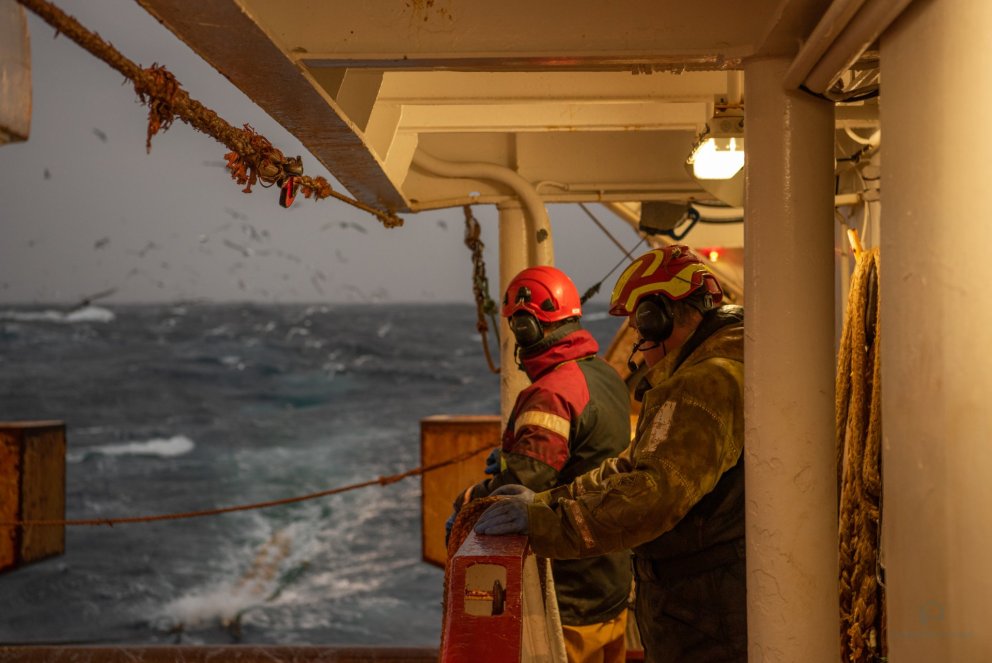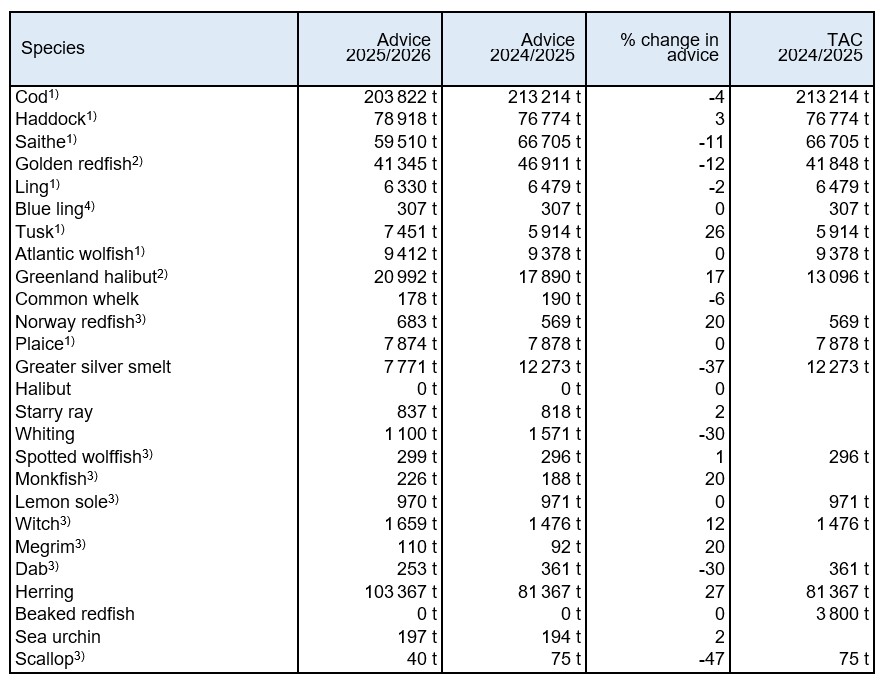- Research
- Fish tagging
- Lumpfish research
- Oceanography
- Seabed mapping
- Arnarfjörður
- Drekasvæði
- Ísafjarðardjúp
- Jökulbanki
- Jökuldjúp
- Kolbeinseyjarhryggur and adjacent area
- Kolluáll
- Langanesgrunn
- Látragrunn
- Nesdjúp
- Reykjaneshryggur and adjacent area
- Selvogsbanki
- South of Selvogsbanki
- South of Skeiðarárdjúp
- South of Skerjadjúp
- Southeast of Lónsdjúp
- Southwest of Jökuldjúp
- Suðausturmið
- Suðurdjúp
- Vesturdjúp
- East of Reykjaneshryggur
- Vestfjardarmid
- Seal research
- Whale Research
- Advice
- About
Advice on fishing opportunities in the 2025/2026 fishing year.
06. June 2025
 Picture: Svanhildur Egilsdóttir
Picture: Svanhildur Egilsdóttir
The MFRI (Marine and Freshwater Research Institute) has released advice on fishing opportunities for over twenty fish and invertebrate stocks in Icelandic waters in the 2025/2026 fishing year. The advice is available from the MFRI website under Advice.
MFRI advises a TAC of 203 822 t of cod for the 2025/2026 fishing year according to the management plan adopted by Icelandic authorities. The advised TAC is a 4% decrease from the current fishing year’s TAC of 213 214 t, as the reference biomass is lower compared to the previous year. The reference biomass of cod is expected to decrease from current levels over the next two to three years. This reduction is expected because the 2021 and 2022 cohorts are estimated to be below average year classes and will fully enter the reference biomass this year and next year. In addition, the 2019 to 2021 cohorts are slow growing, possibly due to the recent poor state of the capelin stock, an important forage fish for cod.
The advised TAC based on the coastal states management plan for capelin is 46 384 t. This advice will be updated before the start of the fishing season based on the planned autumn survey.
According to the updated Icelandic management plan, MFRI advises that the TAC for haddock in 2025/2026 will be 78 918 tonnes which is a 3% increase from the current fishing year’s TAC. The reference biomass is estimated at its highest value and is expected to remain at similar levels next year as the 2019 to 2021 cohorts are above average. However, cohorts after 2021 are initially estimated as smaller so a decline thereafter can be expected.
The advice for saithe, when the updated Icelandic management plan is applied, is 59 510 tonnes for the 2025/2026 fishing year, a decrease of 11% from current fishing year’s TAC.
The advised TAC for golden redfish in the East Greenland / Iceland / Faroe Islands area in the 2025/2024 fishing year is 41 345 tonnes, a 12% decrease from the current fishing year’s TAC. Recruitment has been very low since 2009 and the spawning stock biomass has decreased in recent years. Therefore, the spawning stock biomass is projected to decline. As a result, the advice is likely to decrease sharply in the next years.
For demersal beaked redfish, MFRI advises that no catch should be taken in the fishing year 2024/2025 as the stock is now estimated below the limit reference point for spawning stock biomass (Blim). The stock is not expected to recover above Blim in the near future, as recruitment has been estimated to be low.
Advice for Greenland halibut is increased compared to the previous year and is now 20 992 tonnes. The change in advice is due to an increase in total stock size. Good recruitment has been observed and it is likely that the stock size will increase in the near term.
The advice on the TAC for the Icelandic summer spawning herring is 103 367 according to the Icelandic management plan for the 2025/2026 fishing year, which is a of 27% increase from the current fishing year’s advice. It is expected that the advice will decrease in the following years as the larger cohorts of 2017 to 2019 decrease and the following cohorts, estimated to be substantially smaller, enter the reference biomass. Issues related to estimates of survey biomass in 2024 and 2025 have increased uncertainty in the assessment.
In addition to the advice on catch limits, a summary of bycatch of marine mammals and seabirds in fisheries in the Icelandic marine area is published today. The main findings indicate that bycatch of key species has decreased since the last assessment. The bycatch of several species is, however, remains considerable. The bycatch of species with small or significantly declining populations—such as the harbour seal, black guillemot, and great northern diver—highlights the importance of monitoring both bycatch volumes and the population sizes of these species.
The following table shows the MFRI advice for the 2025/2026 fishing year.

1)Advice according management plan
2)TAC on the entire distribution area for the calendar year
3)Advice every other year
4) Advice issued last year for two years
